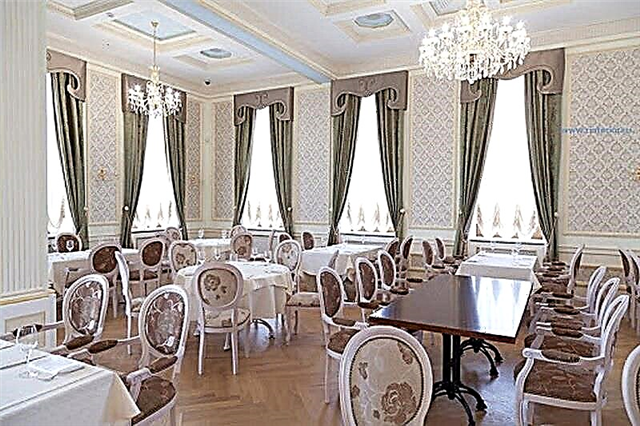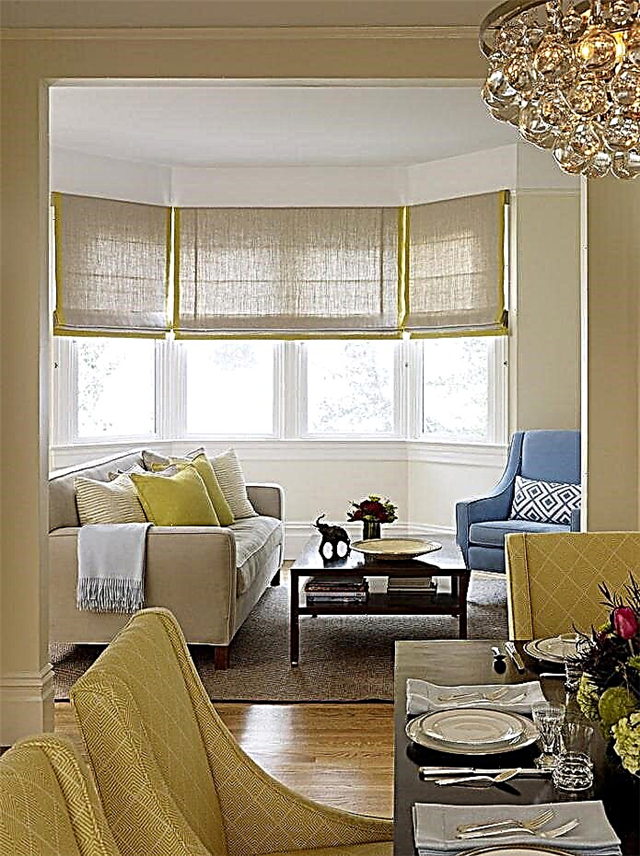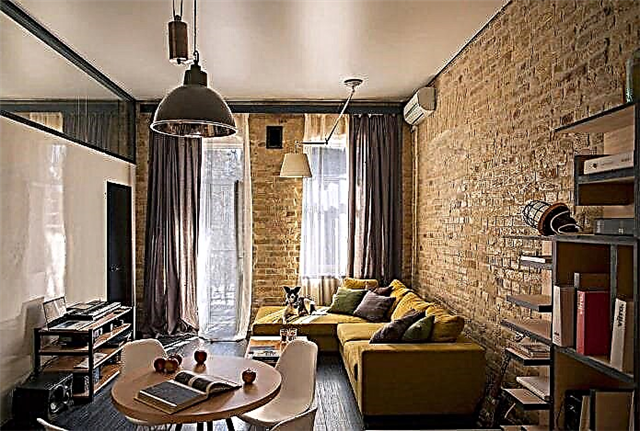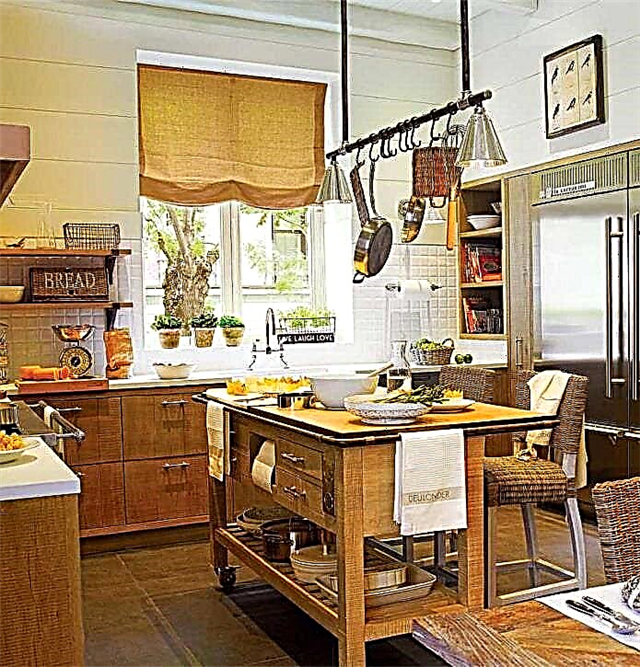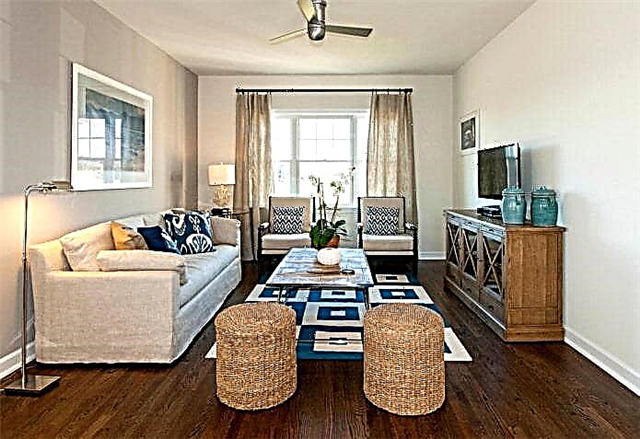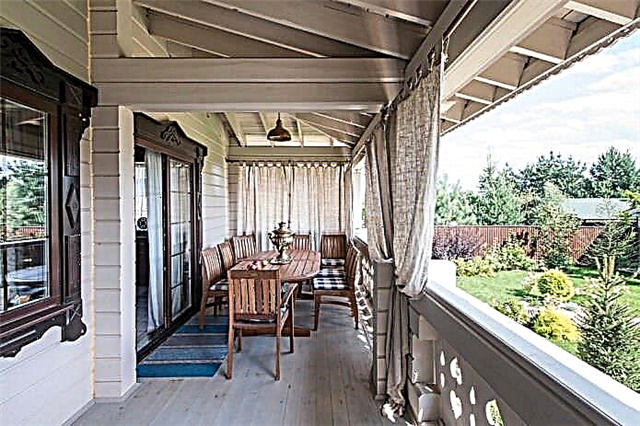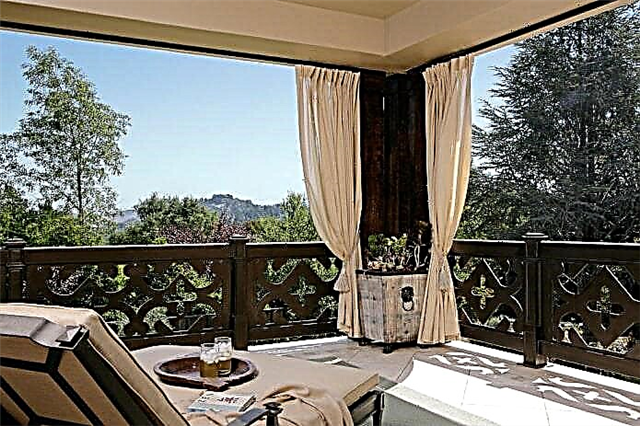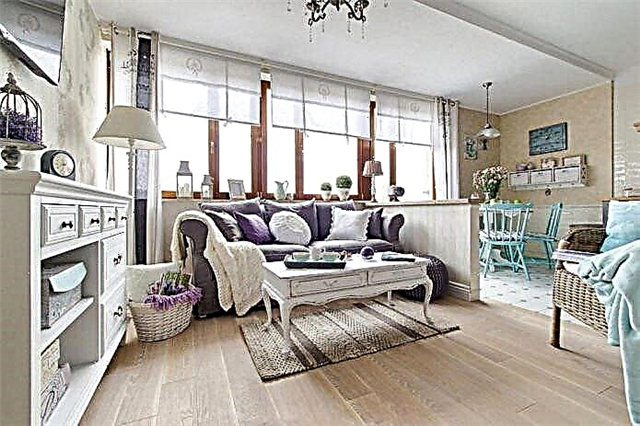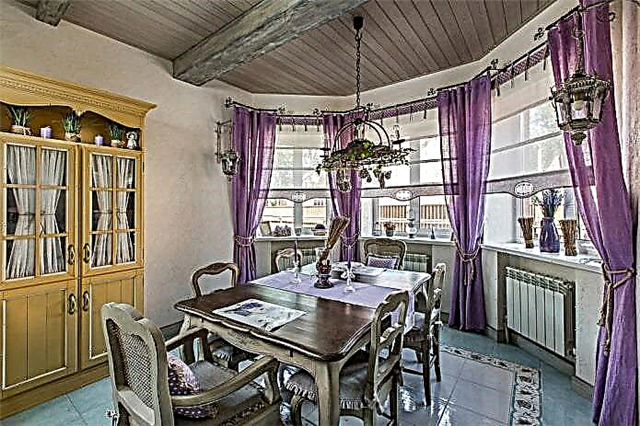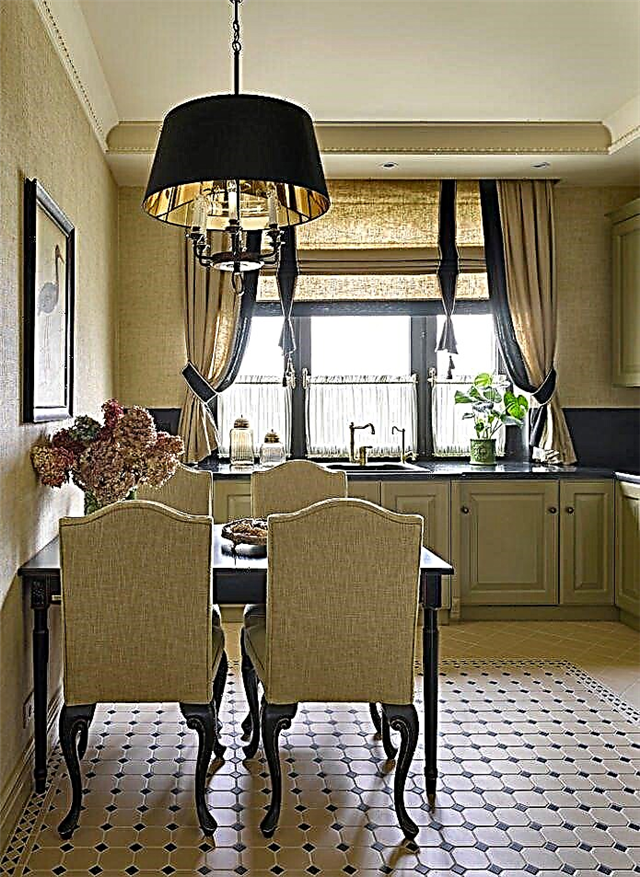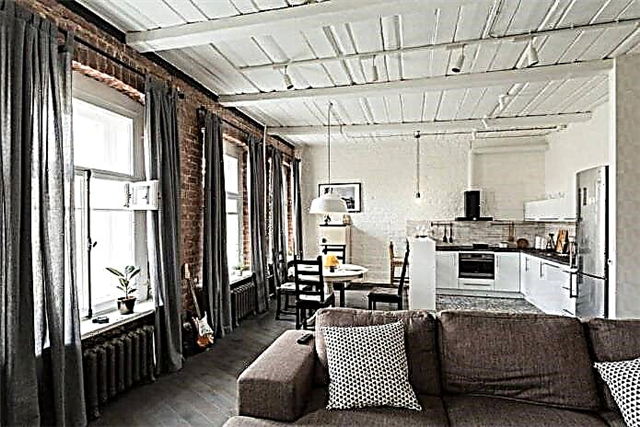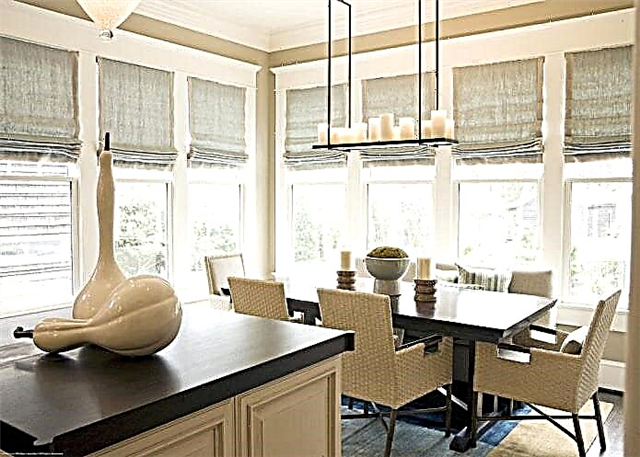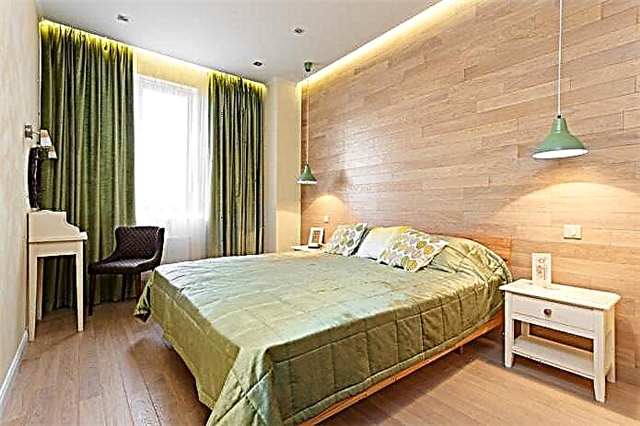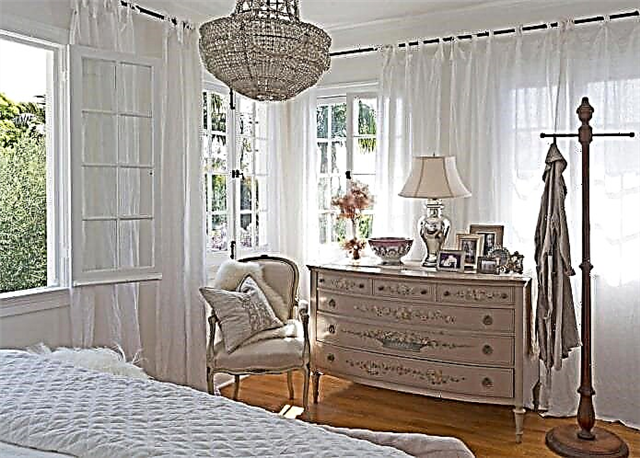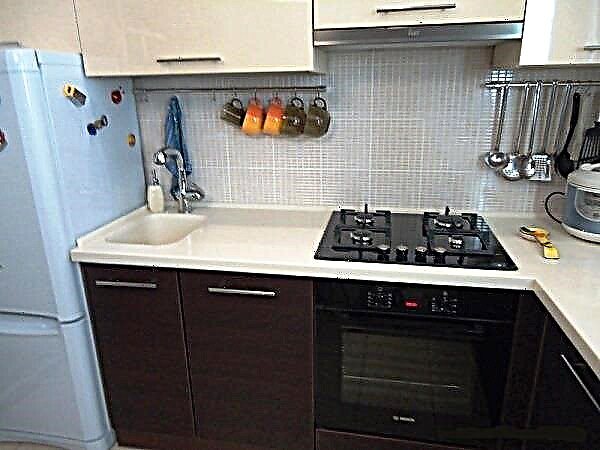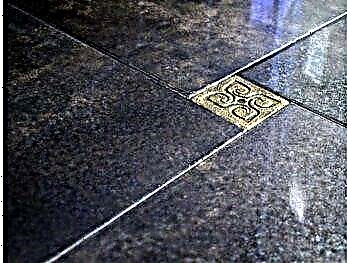Linen fabric is one of the few that are still produced from natural raw materials. It is widely used for sewing clothes and interior decoration. Consumers highly value this fabric, which pleasantly “cools” in the heat and absorbs excess moisture, allowing the body to “breathe”. The material is light but dense. Linen fabric has a rough, pronounced texture of fibers. The uniqueness of the material lies in its versatility. Of the filaments, depending on their thickness, it is possible to weave both the thinnest tulle and dense fire hoses. Linen curtains - a stylish and unusually beautiful decoration. Let's talk about the amazing plant and decorative fabric that is made from it.
About flax: history, production and interesting facts
The pioneers of flax were the Indians. Almost 10,000 years ago, linen was first made here. Gradually, it replaced the “natural” material - animal skins. The plant began to grow everywhere. Unique linen weaved in ancient Egypt. Due to its incredible lightness, tissue was compared to “baby’s breath”. For clarity: 1 kg of yarn consisted of a thread about 240 km long. A modern tangle of similar weight is unwound for 30-40 km. The linen cloth turned out so thin and weightless that folded in five layers, it still shone through slightly. Any item of clothing could be passed through the ringlet. In Egypt, the loss of harvest of this plant was considered a real disaster. In ancient times, linen was highly valued. The cost of the canvas was determined using weights. They put a thing on one bowl, and gold on the other according to its weight. Only wealthy people dressed in such clothes - mostly priests. For mummification, linen ribbons (bandages) were also used. They are perfectly preserved, as evidenced by the findings of Egyptologists. Some critics are skeptical that the bandages were soaked in a balm that “canned” them, but the linen fabric itself lasts a long time. It is believed that the secret of “weightless” material was irretrievably lost.
In Rome, flax was preferred by women. In Russia, plants began to grow late - only by the beginning of the XI century. Material was woven only for their needs. Only by the middle of the XVIII century, Catherine II gave official permission to export fabric. In Europe, for a long time, flaxseed was considered the destiny of wealthy families. The cost of the fabric, although it fell in comparison with Egyptian prices, but still remained high. Only after the Renaissance, even the poor could afford such things. Now flax is grown everywhere. In recent years, there has been a real “boom” in natural fabrics. Cotton, although lower in cost, definitely lost flax in this competition. This is due to the unique properties of the hypoallergenic fabric, which is not only pleasant to the skin, but also treats burning, itching and other signs of irritation. For the manufacture of fabric using special varieties of flax. First, the plant is soaked, then dried and thoroughly crushed. The resulting blocks of raw flax are sent to a spinning mill, where yarn is obtained from them.
Varieties of fabrics
Depending on the purpose, linen fabrics are classified into the following types:
- Linen. They are used for sewing underwear and bedding. As a rule, the material is bleached.
- Towel Fabrics are used for sewing towels.
- Canteens. Bleached or one-colored fabrics from which tablecloths and table napkins are sewn.
- Clothes. This matter can be either monophonic or with a pattern on the surface. Use fabric for sewing clothes. Things can be used both in summer and in winter. In addition to the feeling of coolness in the heat, flax warms perfectly.
- Applied. Used to make small jewelry (mainly for clothing).
- Decorative. This type of fabric is used to decorate the interior. Mostly curtains, upholstery or pillowcases for decorative pillows are made from decorative matter.
There is also a classification by type of weaving:
- Twill.
- Linen.
- Coarse.
- Shallow.
- Openwork.
- Satin.
Depending on the density of linen fabric and the method of weaving, the material is divided into subspecies:
- Canvas. Used for the manufacture of paintings for painting.
- Canvas and canvas. They are used for sewing tents, raincoats and waterproof specials. clothes. The material is woven from thick fibers and impregnated with special water-repellent compounds.
- Sackcloth. Bags are sewn from this crude variety of linen fabric, but the material is often used in decoration due to its special texture.
- Batiste. Lightweight material designed for sewing clothes and sophisticated lingerie.
- Damask. A dense variety of linen that is used for sewing curtains and furniture upholstery.
- Crinoline. Thick lining fabric.
In addition to the above types, there are also Colomian, fine linen, ravenduk, matting and teak. All but the last are mainly used for sewing clothes (from summer dresses to men's suits).
There is also flax vischer. This is a combined natural synthetic material. Almost 80% of it consists of polyester, and the balance is linen and spandex.
Advantages and disadvantages of linen curtains
Flax matter has a lot of advantages:
- Strength. Wear resistance. Linen fabric is not so easy to wipe or tear. If we are talking about dense matter (burlap, canvas, teak), then making a hole in it without sharp objects is generally impossible.
- Resistance to chemical compositions containing acids. Such products make flax softer.
- Environmentally friendly and hypoallergenic. If you use the material for the manufacture of furniture upholstery, then on such an armchair or sofa any person can sit, even with problem or hypersensitive skin. The same rule applies to linen clothes.
- Breathability. The material "breathes."
- Low peeling. No spools are formed on the surface of the material. And it doesn’t matter how much the fabric has been used.
- It does not contribute to the occurrence of static electricity, that is, it is not electrified.
The disadvantages of linen are:
- Low resilience. The material hardly stretches.
- Lack of alkali resistance. When exposed to such compositions, flaxseed material loses strength.
- A number of features when washing. Flax cannot be called capricious fabric, but even white matter is not allowed to boil. Soak it before washing, too, can not.
- Burnout under the sun.
- High price.
Another serious problem is the formation of “folds”, which are typical for flax, and high creasing. Matter does not “keep shape” at all after ironing. Enough pairs of awkward movements and curtains will look rumpled. This drawback is particularly acute in clothing. Home textiles just need to be carefully hoisted into place and do not touch unnecessarily.
Variety of color palette
Linen fabrics give a wide variety of colors. However, muffled tones are more often found: mustard, khaki, gray, olive, lilac, blue, beige, peach, cream, pearl. Delicate shades are universal and suitable for any interior. Calm tones look great in a classic setting. In addition, linen is considered non-marking, which significantly increases the use of curtains between washings. Quite often, a natural canvas is decorated with drawings. Usually these are floral motifs and graceful ligature. Large prints, like bright contrasting shades, are also rare. Linen tulle is often decorated with embroidery, which is in harmony with the pattern of the curtains. There are also two-color curtains in which the shades are selected by the principle of analogy. This option will help to combine in a single composition the different colors used in the interior.
What styles are applied
Linen curtains belong to the versatile person. The pronounced texture of the material is ideally suited to eco-style, country, classic, modern. The best option would be linen curtains for the Scandinavian trend, glorifying naturalness and laconicism. The material is excellently draped, so curtains are suitable for solid interiors decorated in ethnic (English, Italian, Dutch, German) styles. Unpretentious burlap curtains are in harmony with the unpretentious rustic atmosphere of the Russian hut or the decoration of a house lost in the French outback (Provence). Linen fabrics do not combine with luxurious styles that require richer material. For example, curtains in the Empire, Rococo, Baroque styles will not look appropriate.
Selection tips
When choosing linen curtains, one should listen to the advice of professional designers and ordinary people who ate the “dog” on the design of their houses:
- Flax blends wonderfully with cotton. Natural fabrics form an original multifact combination.
- So that the curtains are not so wrinkled, you should choose linen with the addition of viscose.
- Linen, richly decorated with lace, is suitable only for ethnic areas. It looks outdated and is associated with typical interiors.
- Coarse texture looks best on fine fabrics. Translucent linen curtains are an essential attribute of marine and Scandinavian styles.
- For the bedroom, you can not choose a material that imitates natural linen. If the composition includes synthetic fibers, then this will negatively affect the ability of the fabric to “breathe” and its environmental friendliness.
- If the curtains are decorated with a pattern, then it must necessarily resonate with the ornament on the furniture upholstery or wallpaper.
- For country style, simple curtains are selected from burlap, which are decorated with delicate garters. This attribute of the decor is easy to do with your own hands.
In modern styles, laconic plain plain curtains are often used on the floor, which are easily adapted to both wooden and metal surfaces in the interior.
Ready-made linen curtains
Flax - a field plant with unique soft blue flowers gives us a fabric that adorns elegant interiors. Linen curtains, canopies and tablecloths are an expensive and sophisticated attribute of designer interiors.
Destroying Myths
It is erroneous to believe that flax is a crude, skimpy material suitable only for a rustic style. The statement is refuted by the modern diversity of this universal fabric. Curtains from linen, except for a rough homespun texture, are made in a silk version. Each thread in such curtains is polished. As a result, window textiles change roughness to smoothness and silkiness.
The room is decorated with light, translucent but dense curtains made of silk material. A weighted version of flax, designers also use in interior styles:
- Scandinavian
- safari,
- rustic
- environmental
- rustic.
Such curtains are appropriate wherever coarse and refined natural materials are used. The range of store offers offers collections of refined finished curtains. They will not spoil the thoughtful interior, but will become a luxurious decoration of the room due to their unique naturalness.
The gentle tones of bleached or dyed linen on the curtains create an uneven play of light, both on the surface of the curtains and indoors. This will highlight the curtains on a hot day, when the curtains, as it were, slightly “play”. This is due to silk weaving.
The harmony of luxury and naturalness
Buying ready-made linen curtains is the right choice. Take to them only natural curtains. In a mesh or with a pattern, but in no case do not chase the wealth of monograms on artificial tulles.
Flax drapes are an example of natural aristocratic minimalism. They are harmonious without elegant lambrequins and draperies. Such textile decorations decorate the interior luxuriously in the folds, slightly careless folds. Or even a canvas thrown over a silk lace.
Natural material does not look luxurious, but the texture looks expensive. Discreetness and modesty are the main advantage of such curtains. Against the background of natural curtains, unpretentious decor will turn into interior luxury. Yielding to accessories, the curtains remain cute chic in the interior.
With or without a pattern, the curtains will confirm the refined and sophisticated taste. They will bring a touch of harmony and peace to the interior of the room.
- The catalog of the TOMDOM store contains 3417 linen curtains. We have the largest selection.
- Prices for linen curtains start at 1090 rubles. We always have low prices.
- Fast delivery in Moscow and other cities of Russia.
What kind of linen curtains are they?
They look at the same time and cozy, and unusual, and stylish. The photo gallery of linen curtains clearly demonstrates how warm it becomes in a room with a window covered with natural linen, how sunlight gently pours through this natural fabric, and how good it is at home in the evening in the room in the armchair by the floor lamp near the window with linen curtains . The room with them even looks a little mysterious, if there is also a linen tablecloth on the table and the same cloak on the sofa.
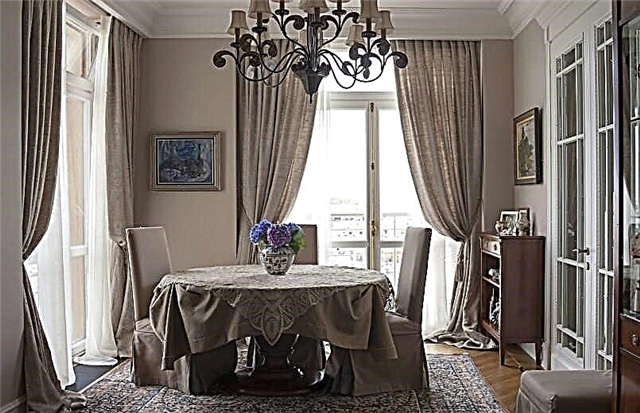
For the kitchen interior it’s just a find, if there are also linen towels - you want to spend more time in the kitchen, linen is a natural material, looking at it you want real - vegetables, herbs, stew and village pies.
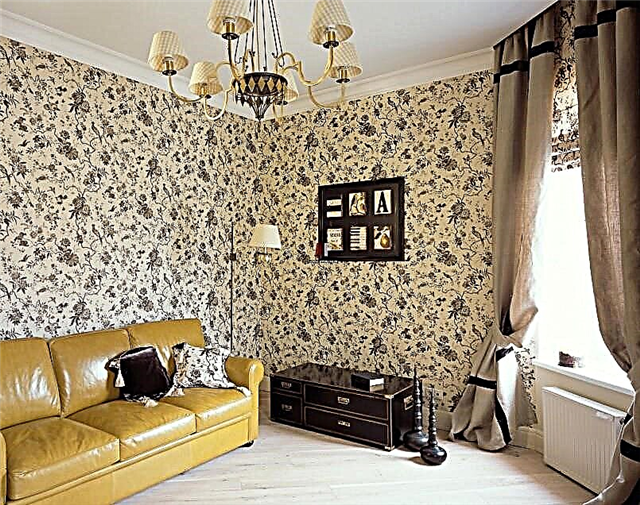
Such curtains are very good in the living room, despite the dull colors of linen fabrics, they themselves are almost the main detail and decoration of the interior - and immediately attract attention.




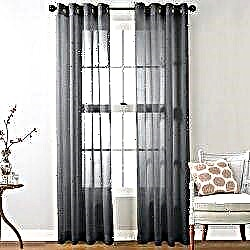
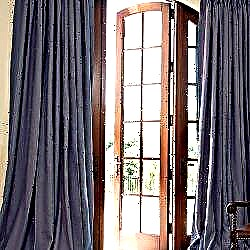






It is not difficult to furnish a room with them - the furniture can be the simplest, and it can be a little - the room will still seem elegant and a bit solemn, since the linen fabric, if it is carefully ironed, gleams slightly.
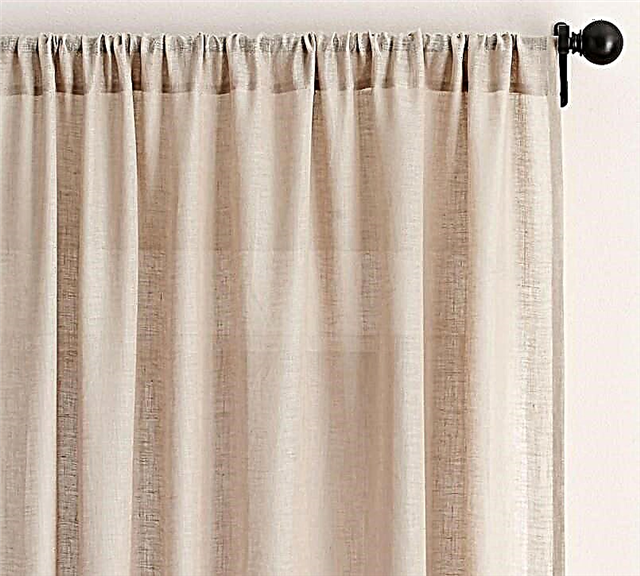
There is no need to starch such curtains - the material keeps its shape perfectly, fits beautifully with large, soft, vertical folds.
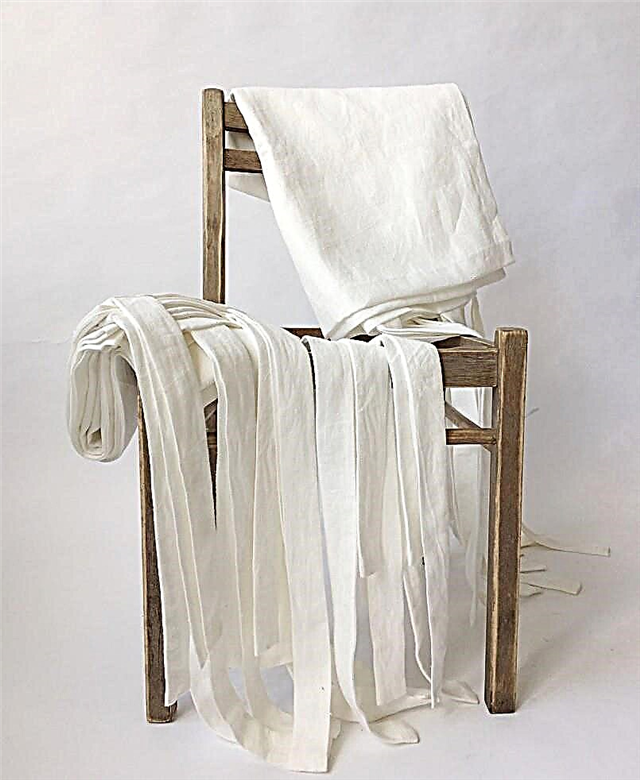
How to choose linen for curtains
This material has its own characteristics and is different in dressing. Fabric fibers are obtained from the skin of flax stalks. It has been weaved for several centuries, modern designers have also not ignored this beautiful, eco-friendly, hypoallergenic material and use it in modeling interiors in various styles.

On the one hand, linen curtains are easy to maintain, since this fabric has the ability to repel dirt, on the other hand, to make the curtains look perfect, you will have to make considerable efforts to smooth them, but the efforts will be justified, because the ironed fabric is badly wrinkled.

An unbleached, bleached linen sheet is made, and with additives. The choice of fabric for linen curtains depends on the style of the interior of the living room or another room - all three types have different textures, and, of course, different shades and brilliance.

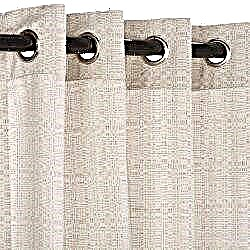





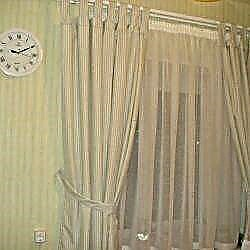
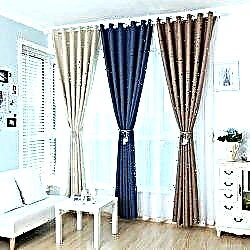


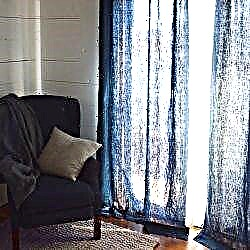
Unbleached linen imitates homespun fabric, this fabric has a slightly dusty gray-brown hue. Its texture is a well-visible plexus of threads. It is used in interior decoration in Scandinavian minimalism, rusticism and other styles, the task of which is to recreate the proximity to naturalism.

The bleached flax has shades of gray-white, beige, milky white. Thin curtains with lace from clarified linen look warm and airy - they will create a particularly bright and homely atmosphere in country, provence and grunge styles.A dense canvas with a pronounced relief is perfect for decorating both the living room and the bedroom - keeping the natural beauty of natural material, this linen fabric looks expensive, it is used in interior design in modern and Gothic, as well as in the African style.
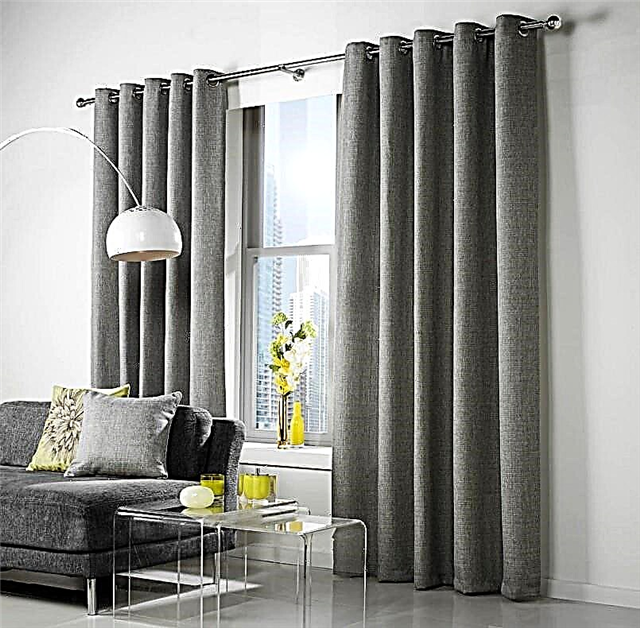
A linen cloth with additives is also produced - lavsan or silk thread. This luxurious fabric has the ability to flicker.
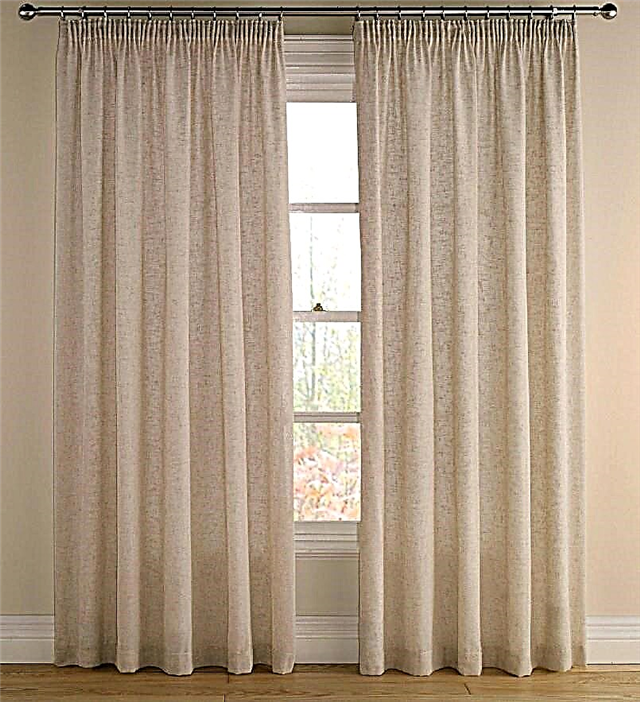
It organically fits into the art deco style - in the premises of this design interior objects of rounded shapes are used: heavy matte glittering folds of linen are very useful here. Flax with lavsan and silk is good in both classical and antique style - where the spirit of aristocracy and sophistication should be in the air.

When choosing a fabric for curtains, you need to pay attention to the picture. If the room is in the antique style - there should be a Greek ornament, and in the Slavic, colonial and oriental interiors, a floral print is appropriate.

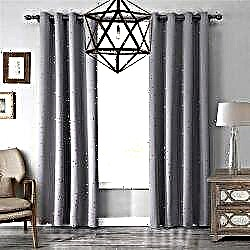

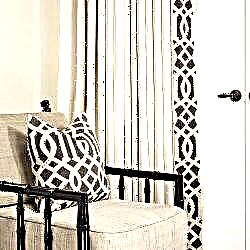



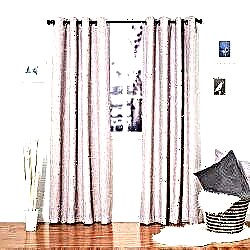




Advantages and disadvantages of flax
Like any other fabric, linen has its own advantages and disadvantages, knowing about them in advance, you can decide whether such curtains are right for you.

Of the obvious disadvantages: without the addition of lavsan - a synthetic thread - natural linen fabric is easily wrinkled, creases immediately remain on it.
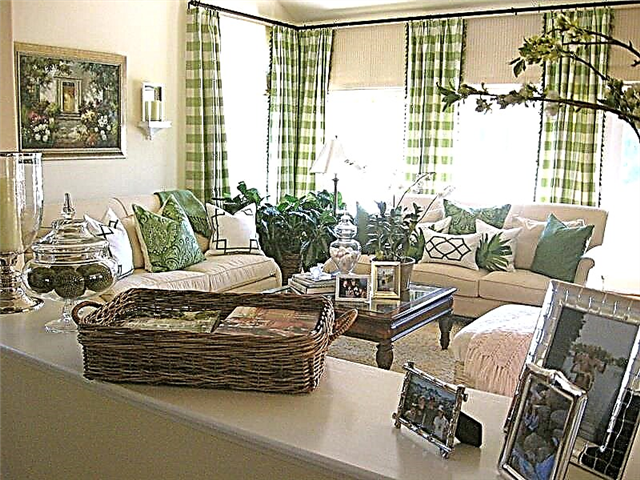


Of the obvious pluses: environmental friendliness, flaxseed, excellent air permeability, hypoallergenicity, exceptional strength - flax will last more than a dozen years. Even after three hundred washes, the fabric retains an impeccable appearance, but it is important to know that after the first wash it shrinks about 7%, therefore, before sewing the curtains yourself, the fabric should be wet and allowed to dry naturally at room temperature, then the finished product will not sit down.
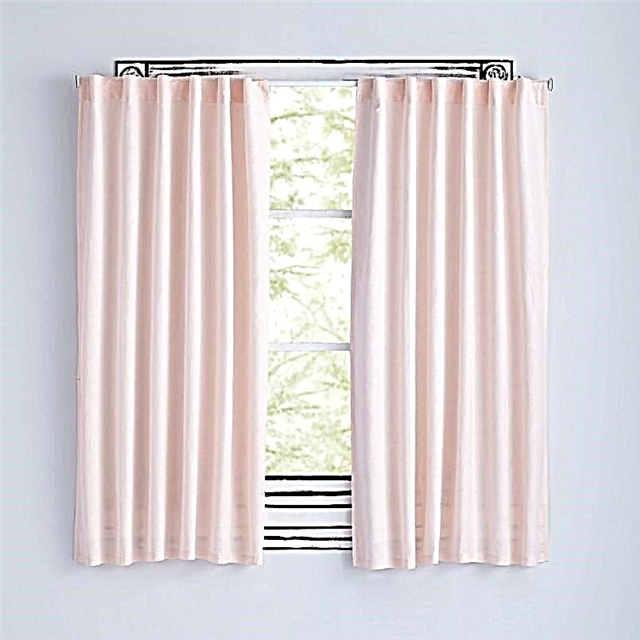
Flax does not like an aggressive cleaning environment - with intensive, frequent washing, it will thin out faster and lose its original structure of weaving. Linen curtains can not be bleached with chlorine and means containing it - the fabric will go stained.

It is not necessary to wait for brightness, saturation of a tone or snow-white purity of color to blueness from linen fabrics, but the mass of shades of a cream-beige palette will make the house unusually cozy, and besides, they are easy to combine with interior items in almost any color scheme.

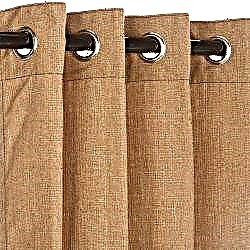









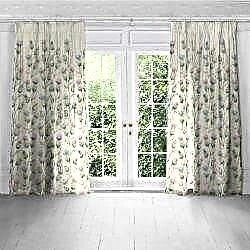
Linen is naturalness, eye-catching colors, and fabric perfectly suitable for home interiors.
Is it worth it to hang?
Linen curtains require caution when choosing, but this does not mean that it is generally worth deleting them from the list of options considered. On the contrary, in addition to the fact that curtains made of natural linen have a lot of advantages, they can also be selected for any room.

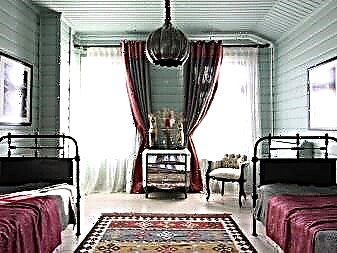
If you compare the pros and cons, the advantage in the direction of advantages will be obvious. Linen curtains have only three drawbacks: the high price, the difficulty of ironing and the fact that linen can fade in the sun, so such curtains are advised to sew on a lining.
If we talk about the pros, you can give a whole list.
- Flax on its own is hypoallergenic material, which is very important when choosing a window design.
- This is a very durable material. Curtains made of this fabric will last quite a long time.
- Even light flax can be called non-brand matter. The dirt seems to slide off linen sheets. In addition, it is very easy to wash, it can be washed even in a washing machine using ordinary powder (although it has sparing properties).
- Linen curtains or curtains can be used in the design of any room and almost any style.
- Flax is very easy to drape, while it holds its shape well. This opens up a ton of possibilities for creating various curtains.
- Linen curtains are not electrified.
- Matter has thermoregulating properties, giving coolness to the room in the summer and perfectly protecting from drafts in the winter.
- Material in itself disinfects and disinfects the air in the room.

However, you can often come across unscrupulous sellers who pretend to be artificial linen for natural. Verifying the authenticity of the material is very simple. It is enough to set fire to a small strip of fabric about half a centimeter wide and see what remains of it. If only the ashes - the fabric is real, if the ashes and lumps - they try to deceive you.
Colors
The choice of different colors is huge. In particular, when dyeing flax, mainly muted low-key tones, such as beige, dark green or khaki, are used. Curtains of an olive shade are especially popular because they are excellently suited to the topic of ecology that is relevant at the moment. You will not find bright orange or curtains in a shade of turquoise, but muted blue ones are not uncommon, especially when decorating bedrooms.


Most people opt for light linen curtains. They help give the room a feeling of airiness, spaciousness, lightness. White, light gray, light beige curtains are a modern classic. They are suitable for absolutely any room, including for decorating the kitchen.

Linen curtains or curtains with patterns also won the hearts of the public thanks to a large selection of design solutions. On a linen cloth, both large printed ornaments and small ones look good.
Tulle made of linen is also often complemented by embroidery made in the same color as the main curtain. In particular, the main colors for the veil are white, light gray, beige.
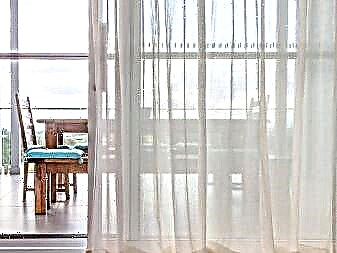

Sometimes you can find a combination of two colors, for example, if you want to combine curtains with wenge or walnut furniture. There are no strict rules about which colors to use - similar or contrasting, but one thing remains the same: the shades should be muted, restrained, as natural as possible. Combinations of white and olive or khaki, white and muted blue, turquoise and beige look beautiful and relevant.

Correct length
It is difficult to say what length is optimal for these curtains. For the kitchen, linen curtains or horizontal curtains up to the windowsill are usually used. For living rooms choose the length from the floor to the ceiling. Do not buy curtains 2 meters high, this length is not sufficient. Curtains must "rest" against some horizontal surface: window sill, table, radiator, floor.
Linen curtains must not be allowed to touch the floor or, worse, lie on it. In this case, the curtains will look messy, ridiculous, inappropriate. A simple linen fabric requires the same simplicity of design, so that such complications only spoil everything.

Styles
As mentioned above, linen curtains fit perfectly into almost any interior. Exceptions are stylistics, which deliberately emphasized the richness of decoration, for example, Baroque or Art Deco. However, for the classical style, it is quite possible to choose such curtains if you do this with caution.
One of the best styles for choosing linen curtains is Scandinavian. It itself is based on the exaggerated idea of simplicity, so flax is an ideal choice for such rooms. True, fabrics with a pattern cannot be used here. Natural colors, such as gray or beige, look best.
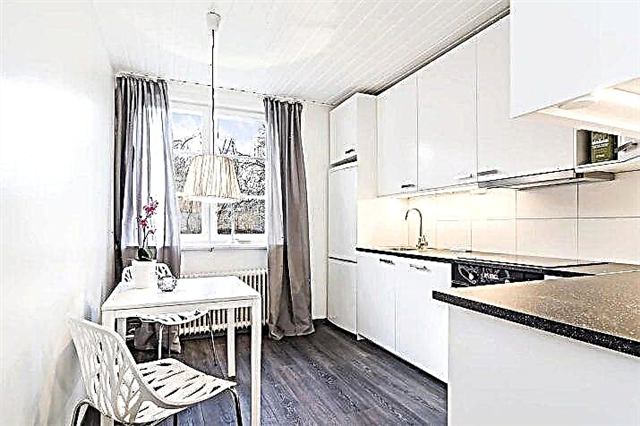
Folklore style is another beautiful style. which “loves” linen frames for windows. It doesn’t matter what style the room is designed in - Russian, Mexican, Georgian - the painted linen curtains, models with embroidery, or even decorated using the batik technique will suit him perfectly.




In a rustic style, linen curtains will also look quite appropriate. For example, a linen curtain with an arch that runs to the middle of the window is a classic option for decorating a country-style kitchen. If it is also made of fabric with a pattern (for example, in a cage or with a floral pattern), it turns out to completely recreate the summer cottage atmosphere in the room.
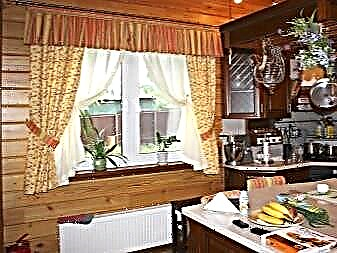

For a marine interior, flax curtains are also very often chosen. In this case, a fabric similar in texture to burlap is appropriate. This is the so-called coarse, raw flax. Usually such a fabric is not even dyed, leaving light gray, but sometimes it is whitened and it acquires a wonderful shade of ivory.


In different rooms
Linen curtains on the windows will give any room a cosiness and atmosphere of simple chic. In particular, this property of matter is often used for the living room. Choosing curtains in the hall, the owners always strive to make the room impress the guests. Linen curtains, despite the apparent modesty, perfectly perform this task. The use of natural materials always looks expensive and stylish.
When choosing curtains from linen for a bedroom, they often stop on floor-length options. Shortened curtain models are practically not used in this case. Linen curtains perfectly protect the room from street noise, and also allow you to even out the temperature background in the room.

Covering the radiator, they slightly cool the air before entering it into the room, and curtains also prevent the occurrence of drafts. Such an atmosphere in the bedroom favors a good, sound sleep.
Medium length linen curtains in the kitchen are a classic of the genre. Mistresses often make a choice in favor of this particular option, since flax is perfectly erased, does not absorb odors, and also looks harmonious. Often linen is used to make Roman curtains for the kitchen, as they are more practical than ordinary sliding curtains.
In the nursery, linen curtains are also used, however, they mainly perform a decorative function. Light curtains made from clarified linen are suitable for both boys and girls.

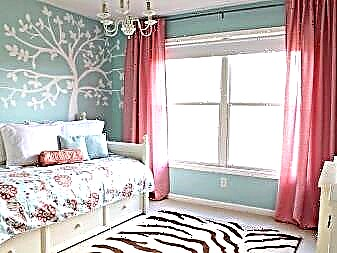
How to choose?
Many people bought linen curtains for their rooms. Their feedback on the experience of such a purchase is very informative. In general, most agree on the following points.
- Familiar linen curtains with lace and a hem are rather a relic of the past, but they will perfectly complement the interior of the room, decorated in a folk style. If you want to use lace in a rustic interior, you should not draw curtains for them yourself, it is better to make lace only hooks for curtains or to frame the edges with lace.
- Linen curtains with the addition of viscose do not wrinkle, so they are most suitable as curtains for the kitchen.
- Artificial linen curtains are not suitable for decorating bedroom windows. Imitation, even very good, does not possess sufficiently the same qualities as natural material.
- When designing curtains, they can be made simultaneously from two different materials. Cotton goes well with flax, and due to the difference in texture, such curtains look quite impressive.
- It is important that the general ornaments of the room and curtains overlap. For example, choosing flax in a flower, you need to complement the curtains with decorative textiles with floral print, for example, a bedspread.
- Thin linen looks very impressive if deliberately rough fabric texture is used. For example, gunny will be perfectly combined with marine or Scandinavian themes. The striped texture does not require any additional decorations, since in itself it is quite interesting and original.


How to hang up?
At the moment, two types of flax drapes fastening different in method are popular: on a curtain tape and on grommets.
Curtains on a curtain tape look very modest and unassuming, while models on grommets attract the eye. If you plan to focus on the design of the window, then the option with grommets is just for you.

Please note that this type of curtain fastening, like curtain tape, is used in folklore, Scandinavian, Loft, Provence, Eco-style. Eyelets should be used when decorating a room in a rustic style. This separation is extremely arbitrary and cannot serve as a rule, but most often in order to fix linen curtains, it is used curtain tapes.
It should also be noted that it is impossible to hang linen curtains with lambrequins or bandos, this contradicts the concept of simplicity itself. The fewer decorative elements to be used with linen curtains, the better. Sometimes even tricks are redundant.

How to stroke and starch?
Ironing linen curtains is a real test for the hostess. It takes a lot of effort and time.
To begin, dry the curtains in limbo. Immediately after washing, having removed the curtains from the drum of the washing machine, simply hang the curtains on the ledge and leave for several hours until the condition when the fabric is slightly damp.
If you are lucky, the fabric will dry almost without wrinkles, and it will be quite easy to iron it.
Preheat the iron to maximum temperature. Iron the fabric until it dries completely, moving gradually from the lower edge of the curtain to the upper. Remember that it is not worth steaming the curtains from flax, as this still will not give any tangible result. It is better to spend a little more time and iron them well. Curtains made from a mixture of flax and viscose will turn out to be especially “grateful”: to mash out after you smooth it out is a rather difficult task.

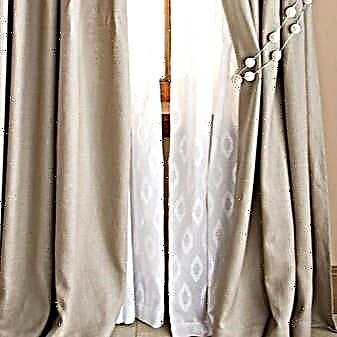
Typically, linen curtains are already quite dense, but if the choice was made in favor of thin curtains, they must be starched.
To process the curtains, a medium-intensity solution should be used, which is prepared as follows.
- A tablespoon of starch with a slide must be diluted in a liter of warm water.
- Heat the solution, stirring, and wait until there are no lumps left. Boil it.
- Then cool and dilute at the rate of 1 liter of solution per 10 liters of water. Rinse the curtains in a starch solution, squeeze and hang them to dry.
- Then repeat all the same steps that were described for regular ironing.


Options in the interior
A variant of the dining room, decorated in a classic style. Natural color curtains perfectly complement the interior, at the same time adding to it calmness and giving the whole composition a finished look.

Translucent two-color curtains made of linen for the bedroom are made in various techniques: external bright panels are attached directly to the tubular cornice, and internal - on the rings. This technique allowed to visually add a little height to the room.
Drapes on grommets are a great option for window decoration in a Scandinavian interior. They look very neat and at the same time expensive, demonstrating the excellent taste of the owners.

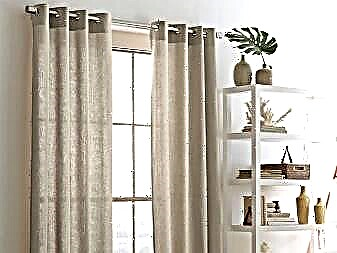
Here is a Provence-style room, complemented by two-color curtains. Note how the colors of the curtains resonate with the general decoration of the interior. A plaid with floral motifs acts as a connecting component.

The rustic style pattern looks great on linen curtains, allowing you to create a provincial-naive atmosphere in the kitchen. Such solutions add comfort to the rooms and always bring to life warm memories of childhood.

Muted blue combined with white creates a very fresh duet. In such a room, breathing is easy. Curtains that extend almost to the floor perfectly frame the large window of this living room. A double cornice of contrasting color acts as an element of decoration, visually balancing the proportions of the entire window space.
Roman curtains look no worse than classic sliding. The correct selection of color scheme and pattern, shown in the photo, gives an interesting idea for the design of windows in the living room.


Also, examples of linen curtains in the interior, you can see in the video below.
Interior Design Features
There are a number of features:
- Linen has the ability to repel dirt, so curtains made of such a fabric are perfect for decorating the kitchen.
- Linen curtains do not need lush drapery, as the texture of the material looks beautiful in itself. Therefore, do not overload them with additional elements.
- Thick linen linen is more suitable for a bedroom or living room, where they will look expensive and stylish.
- The color of the curtains is selected in accordance with the main appearance and decor of the room.

Advantages and disadvantages
Linen curtains have their advantages and disadvantages.
| pros | Minuses |
|---|---|

